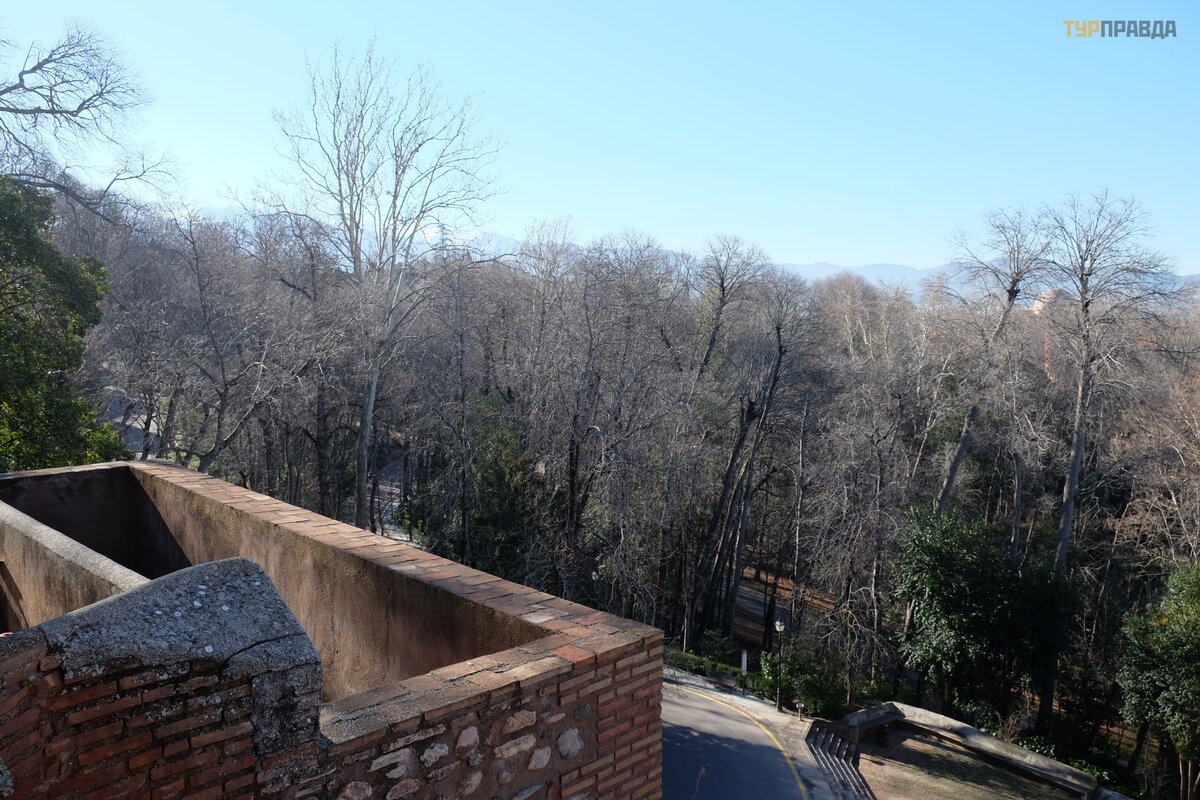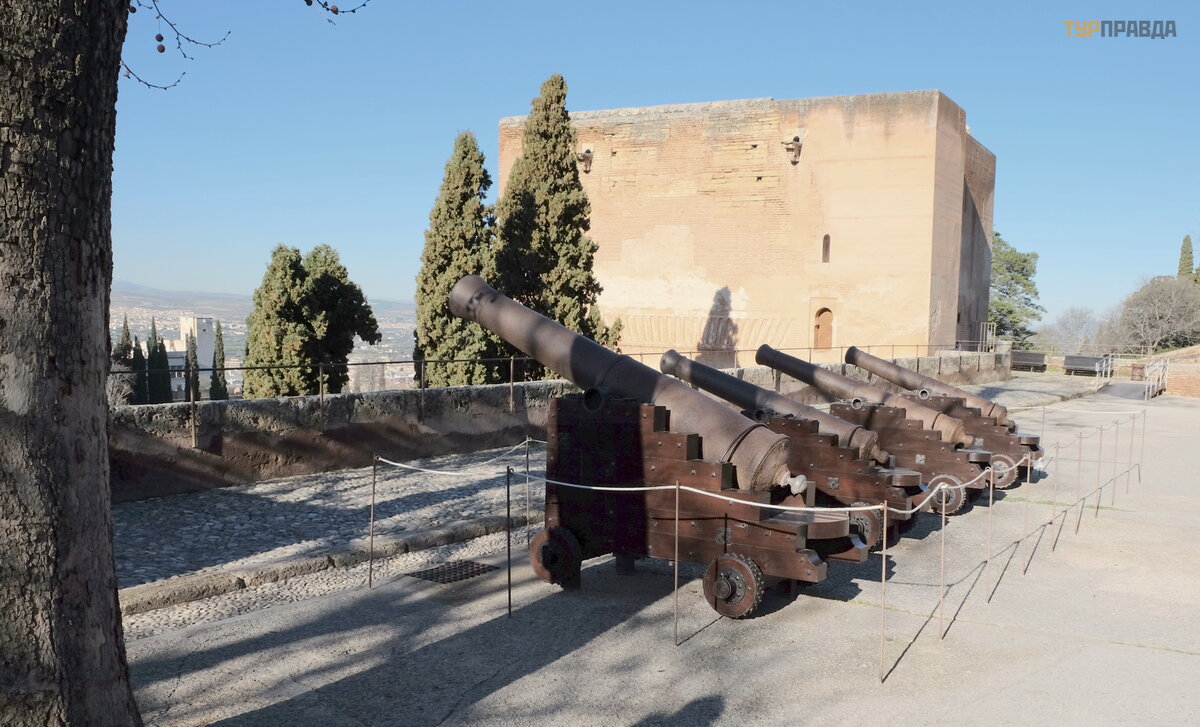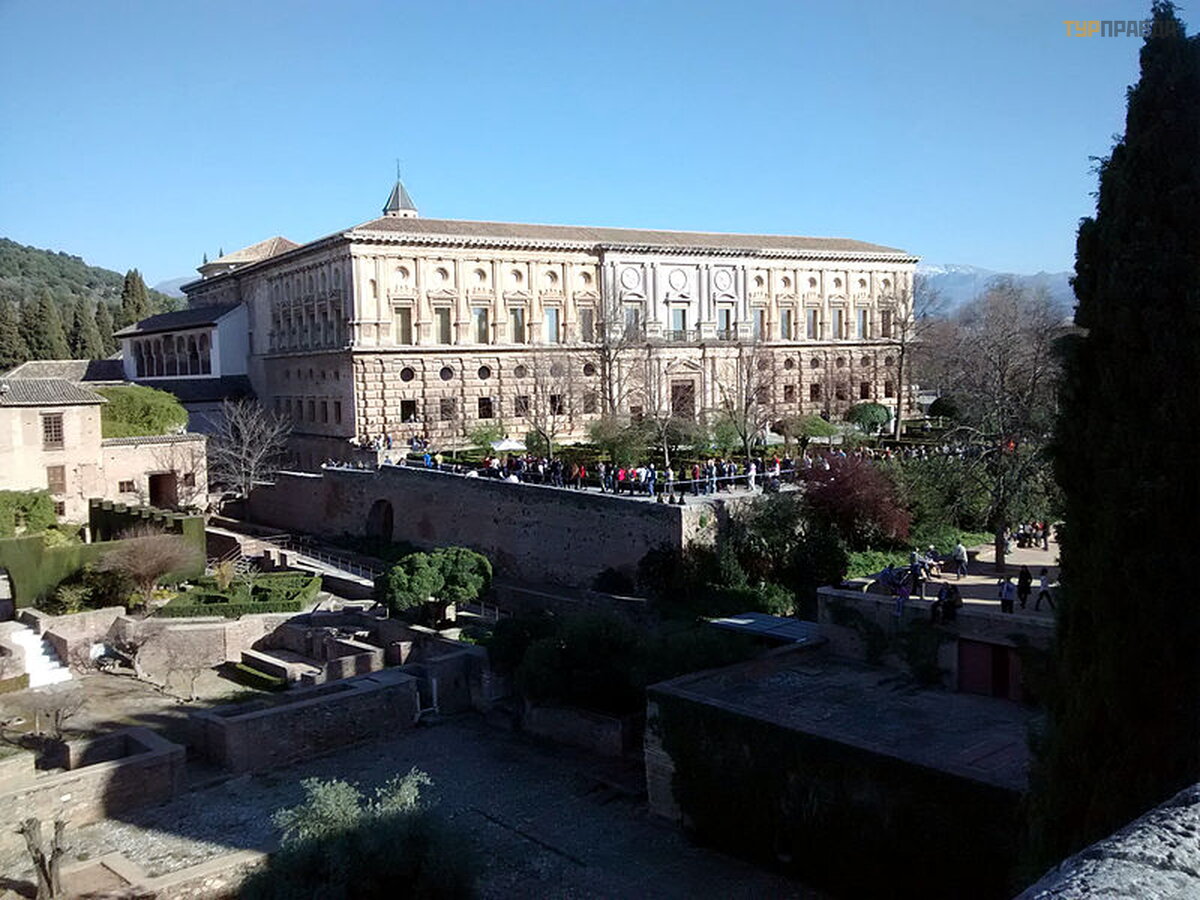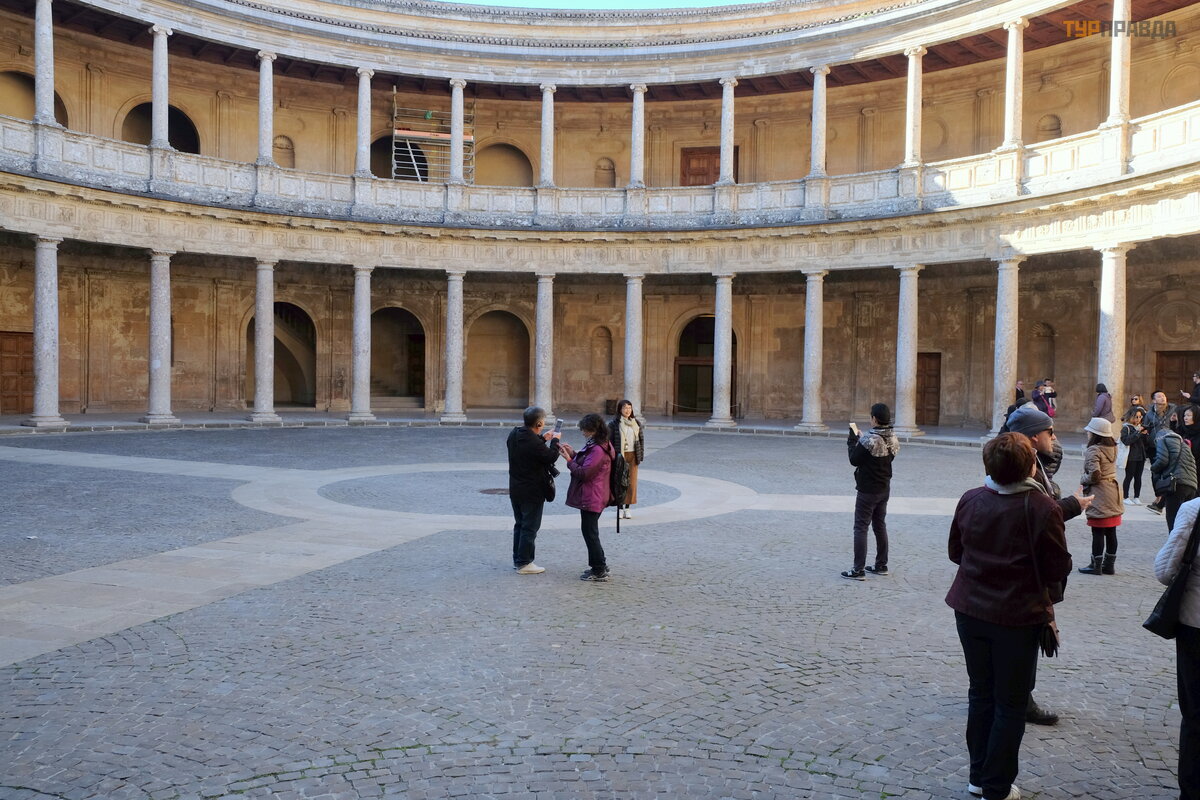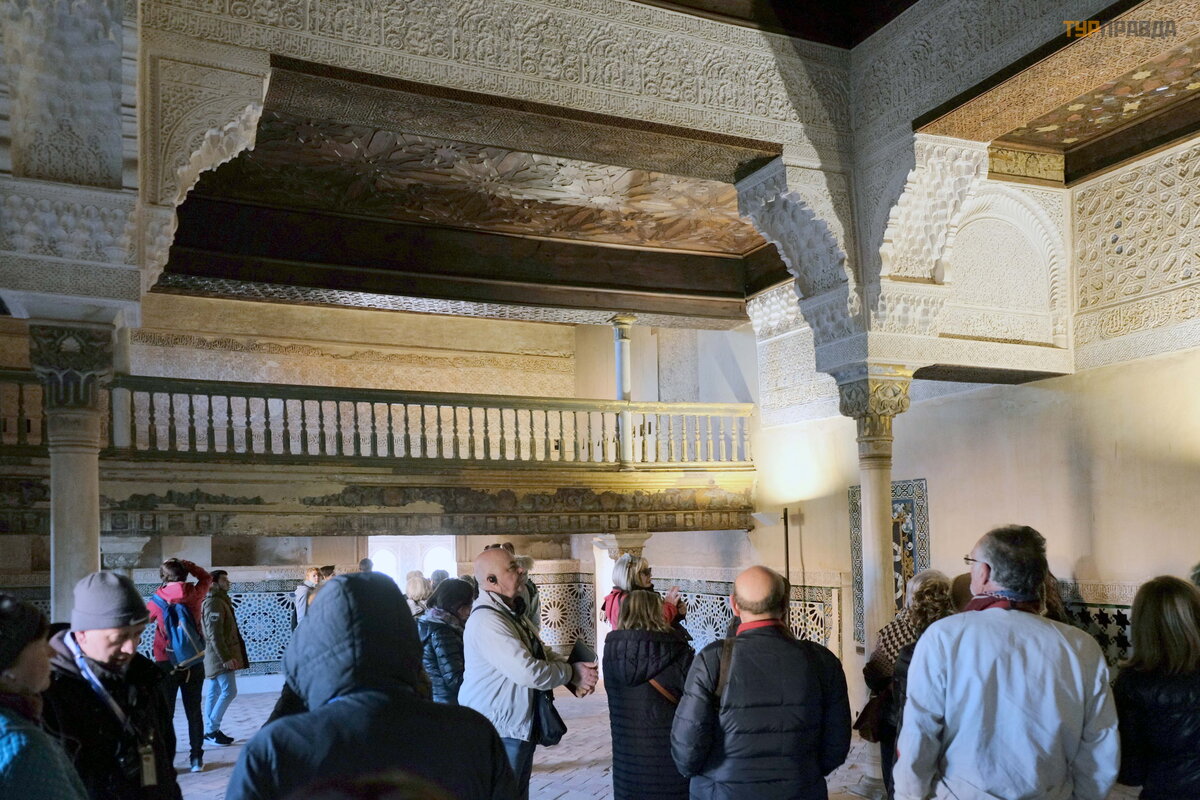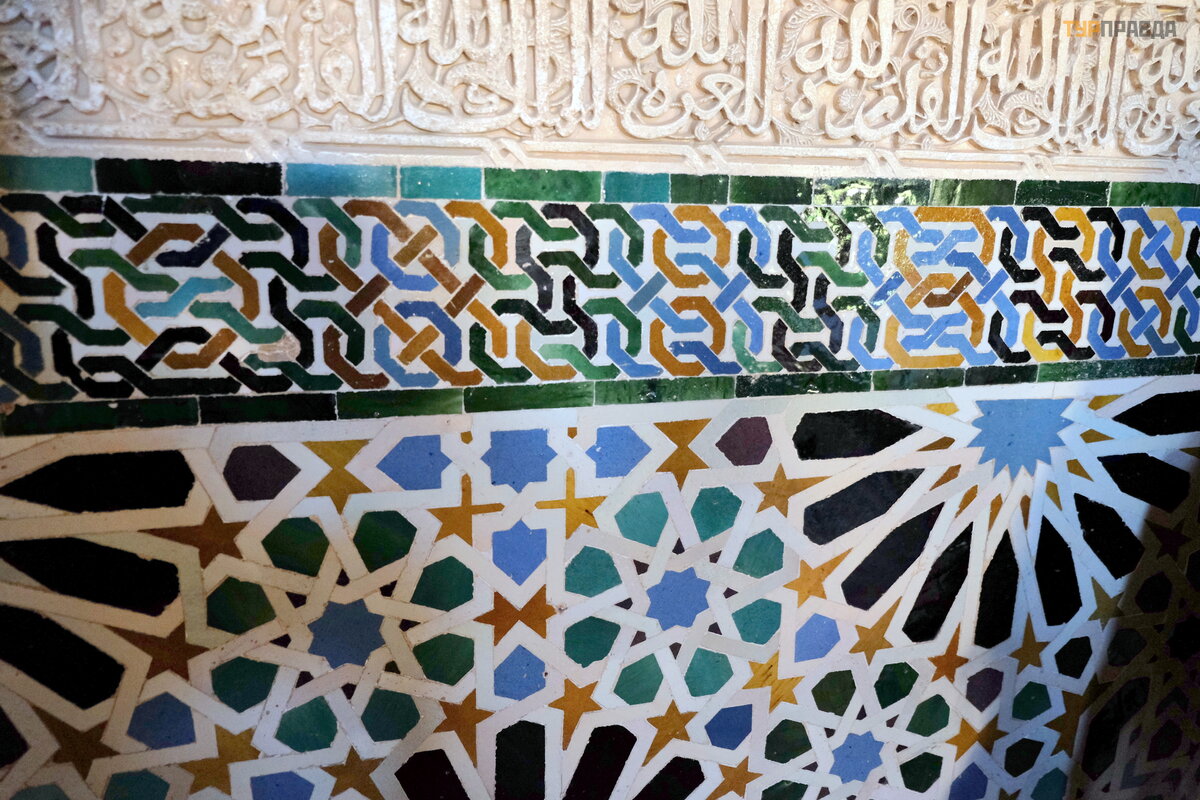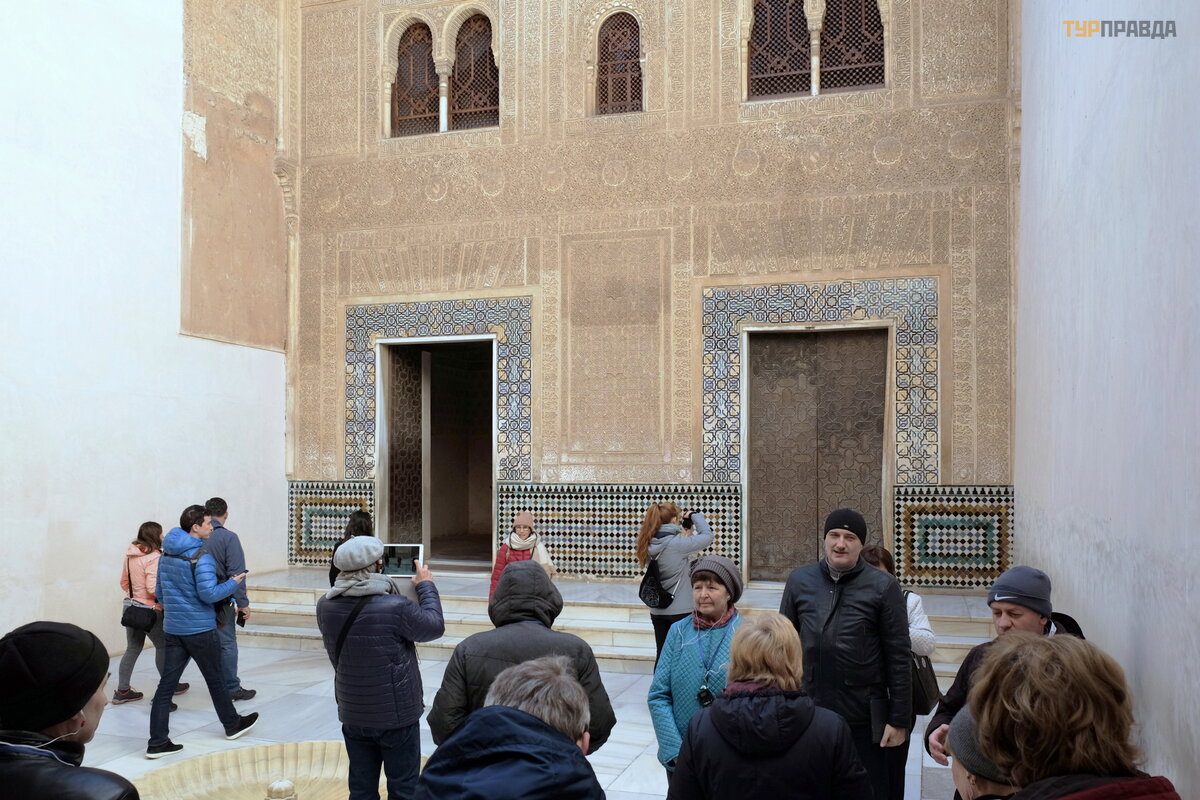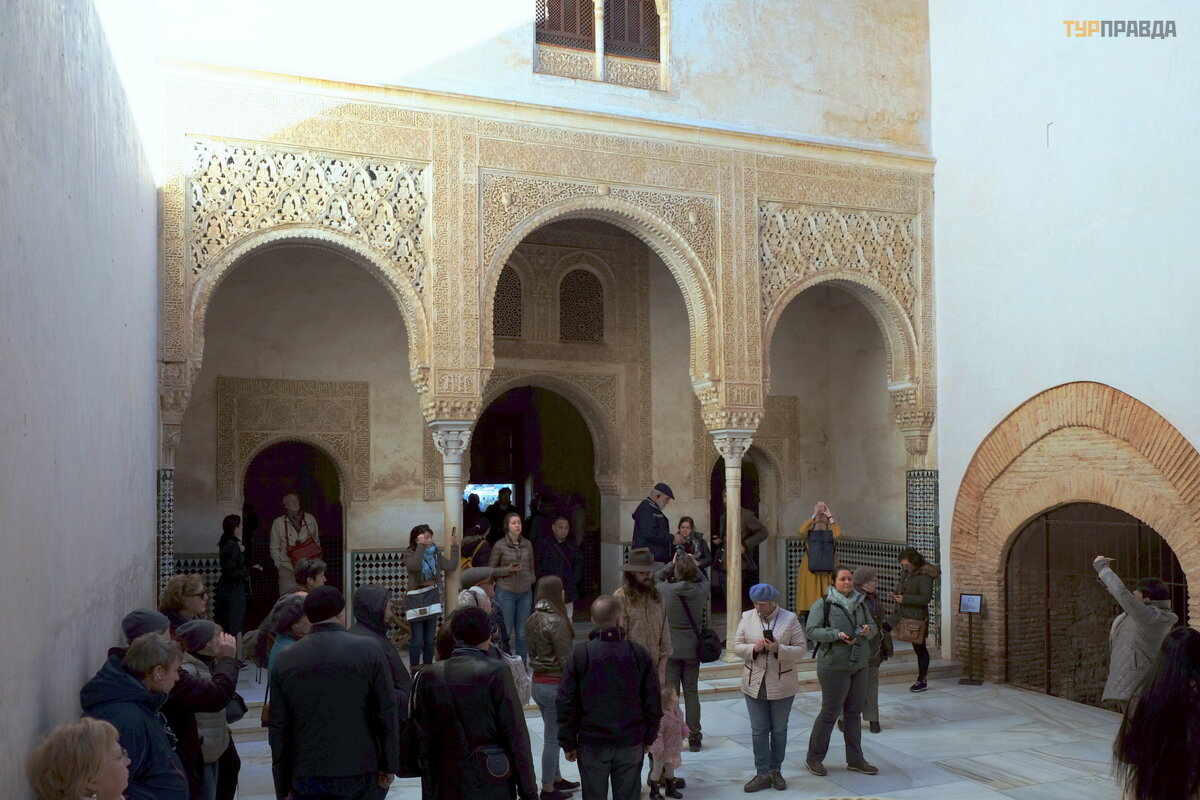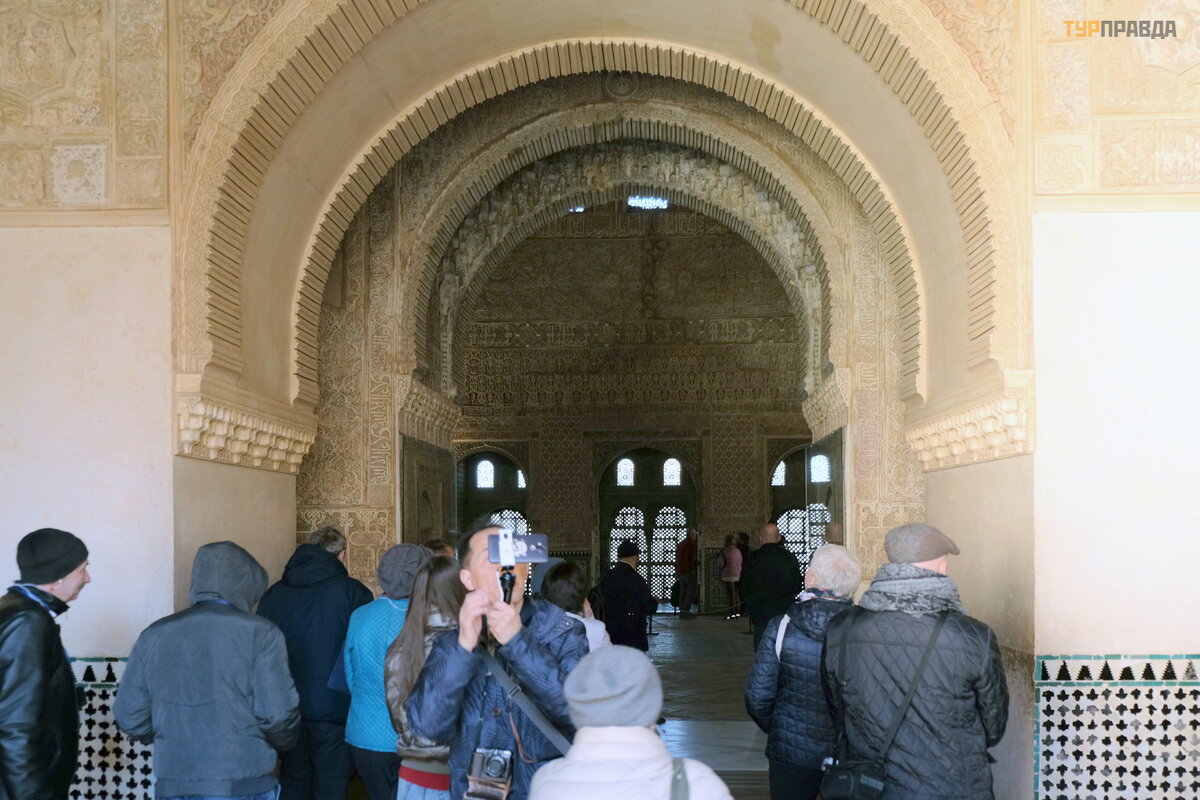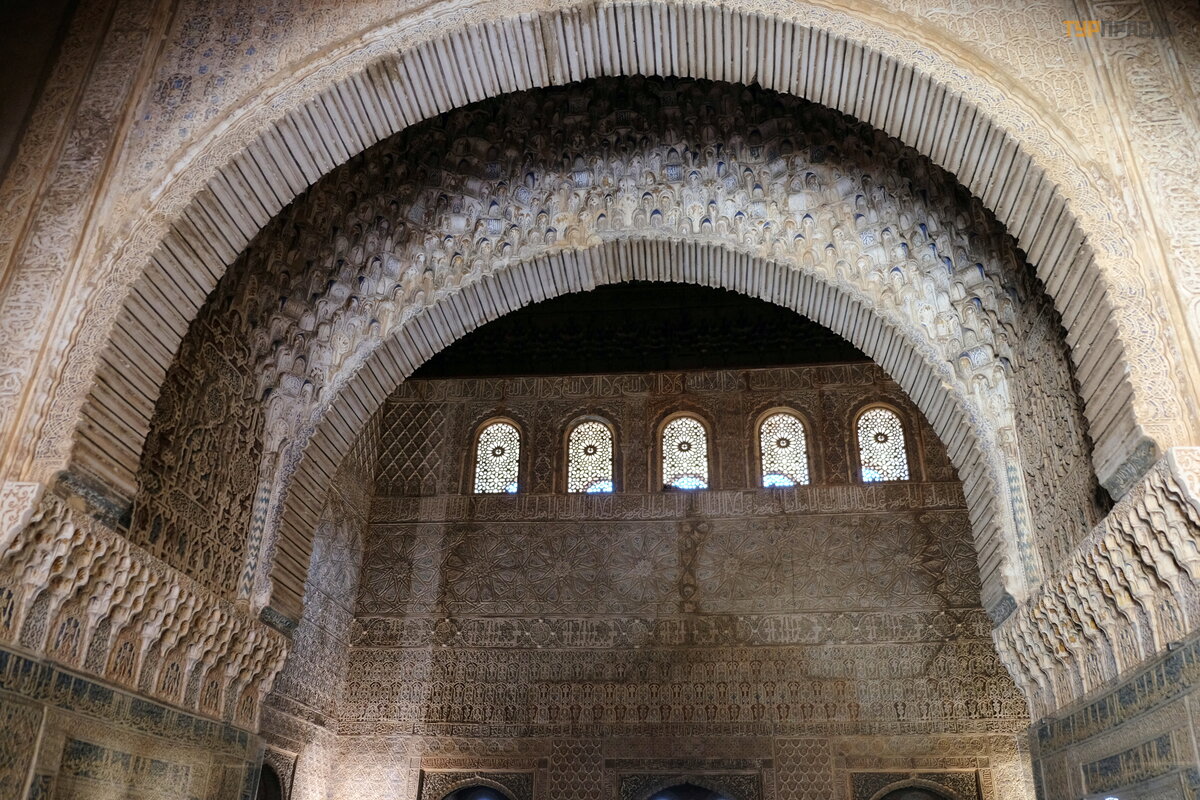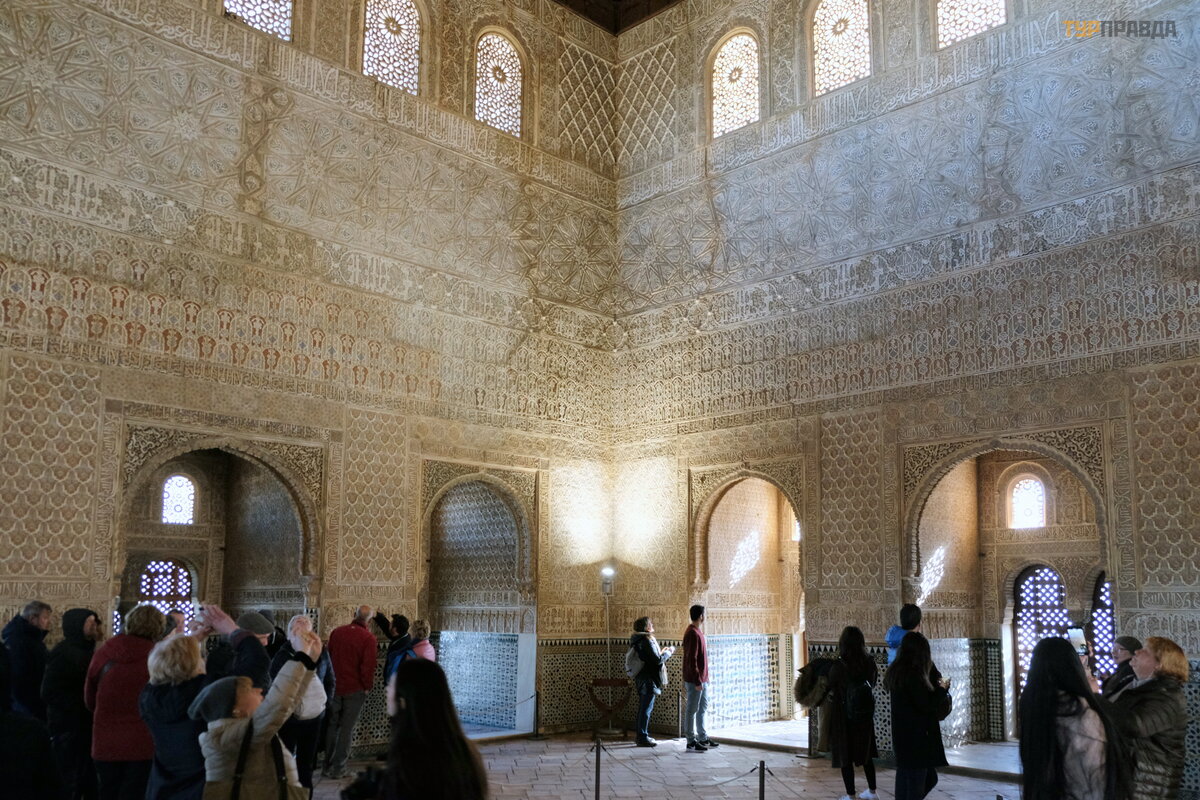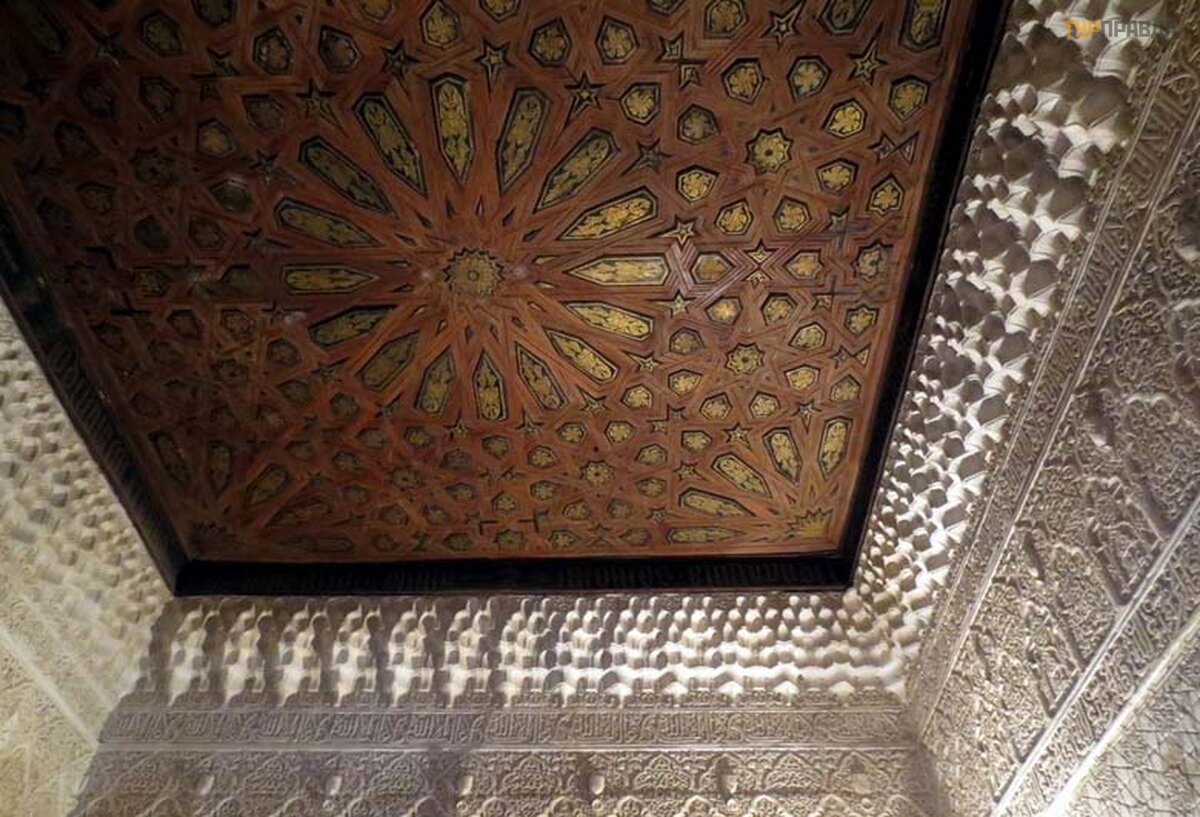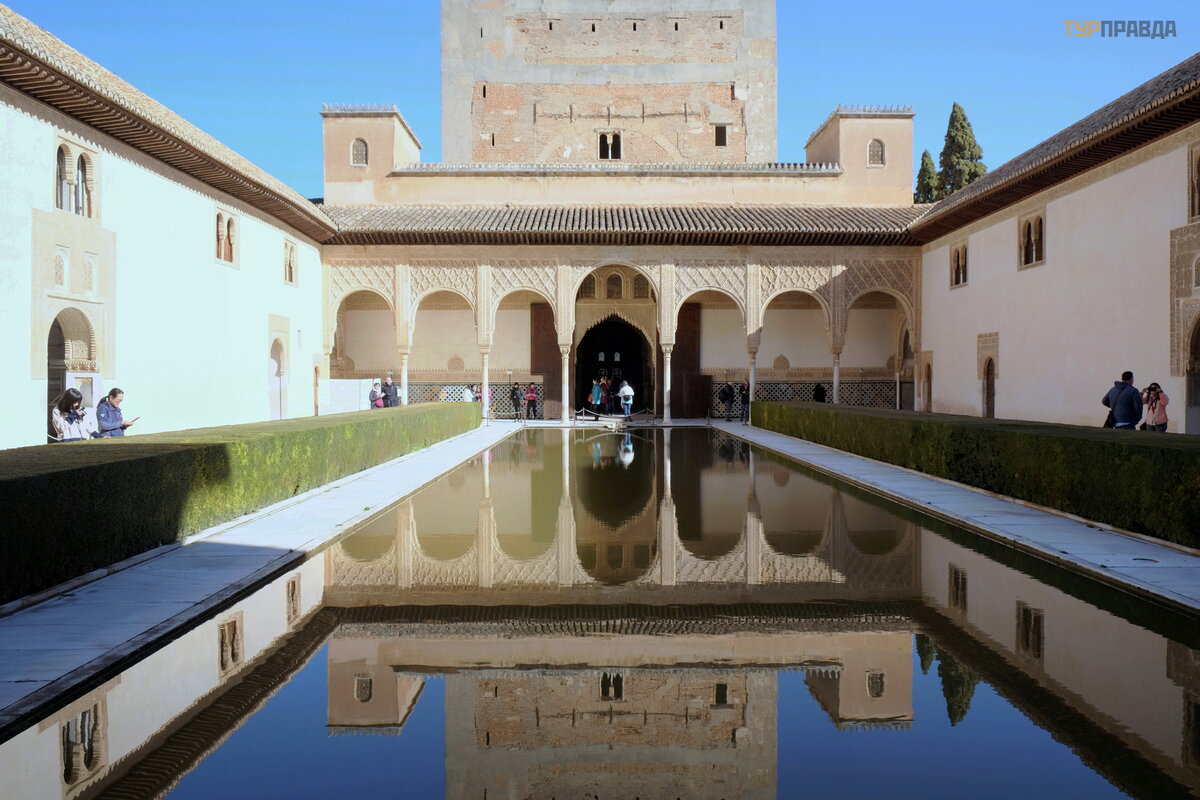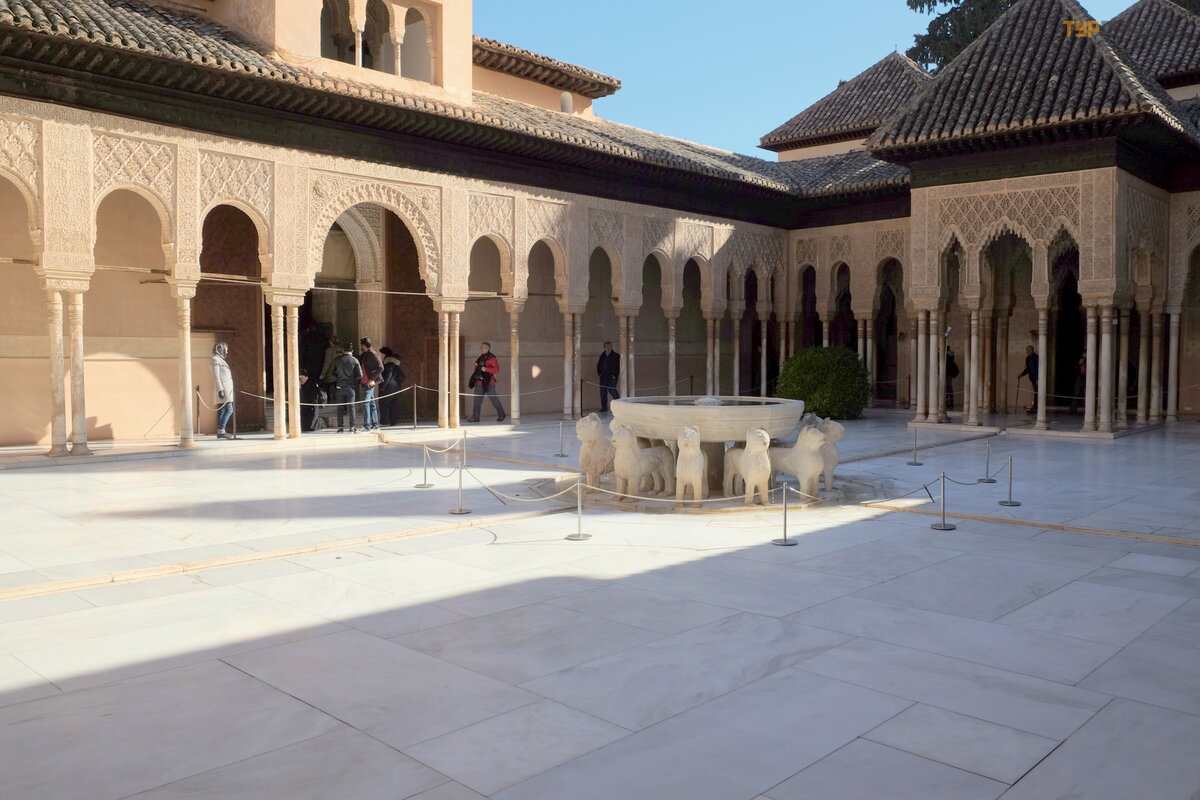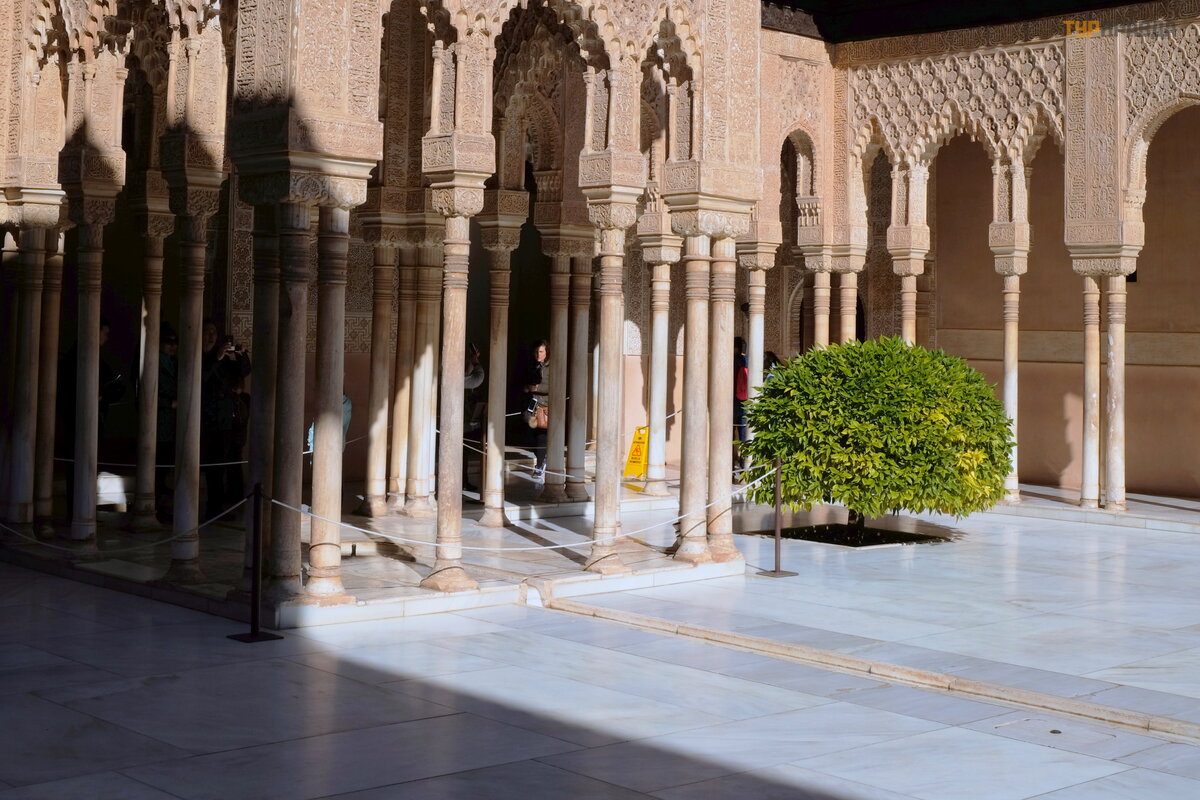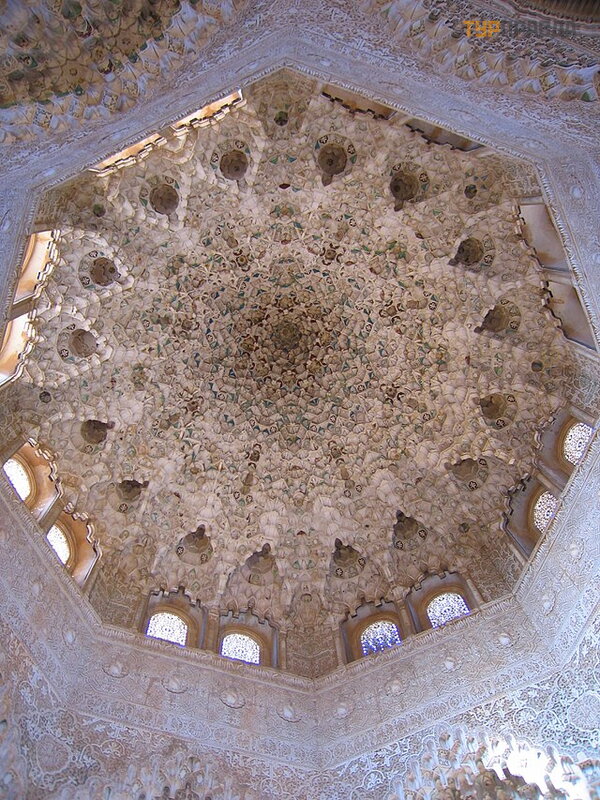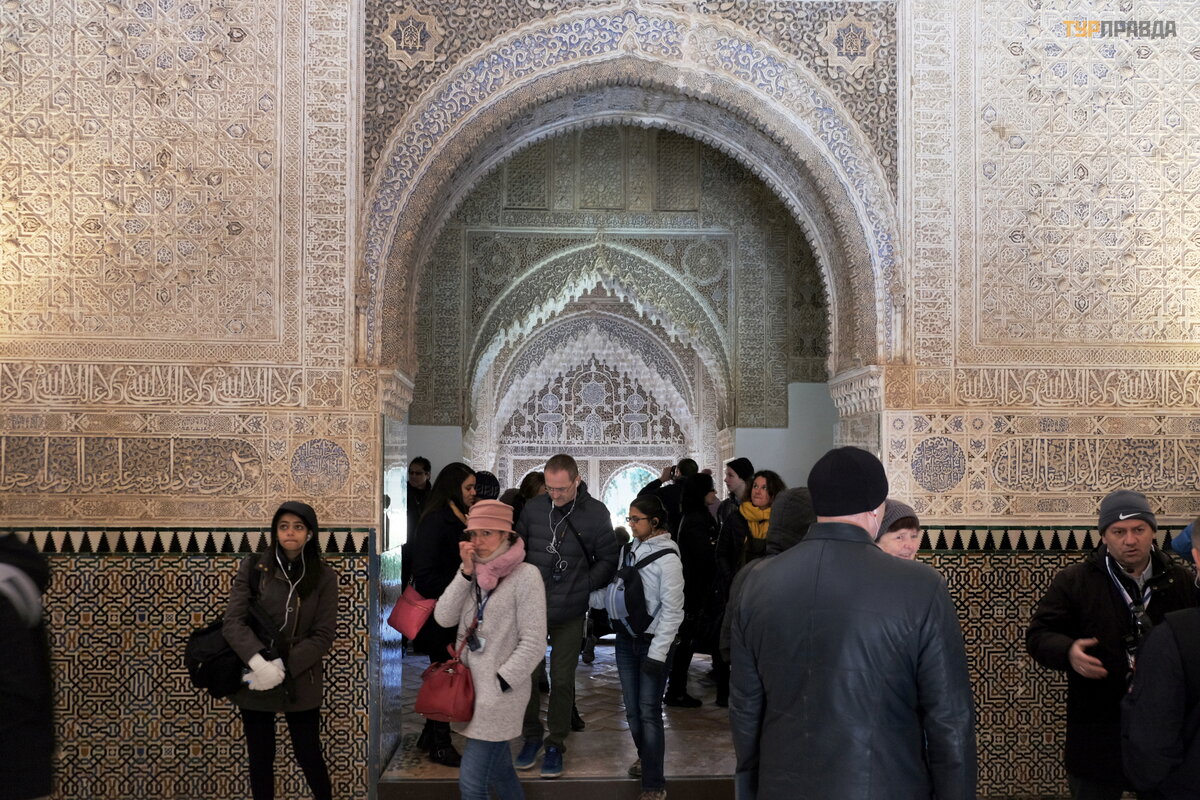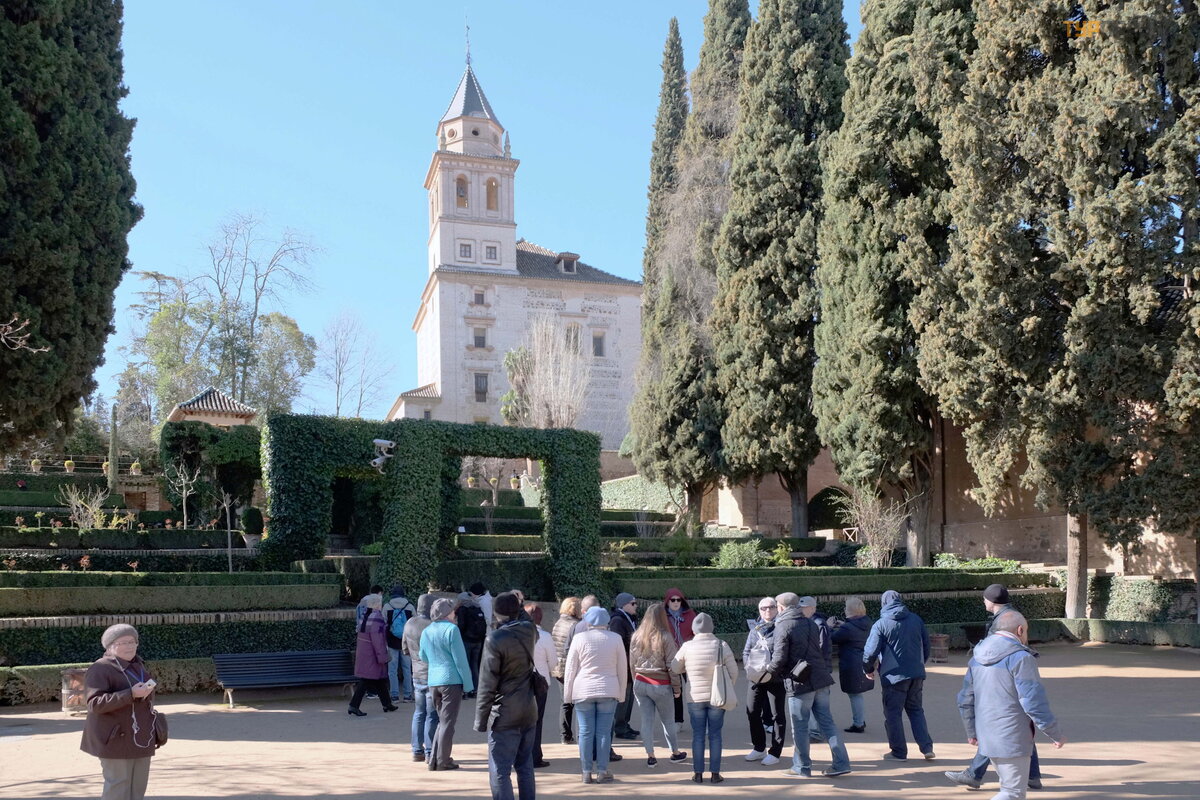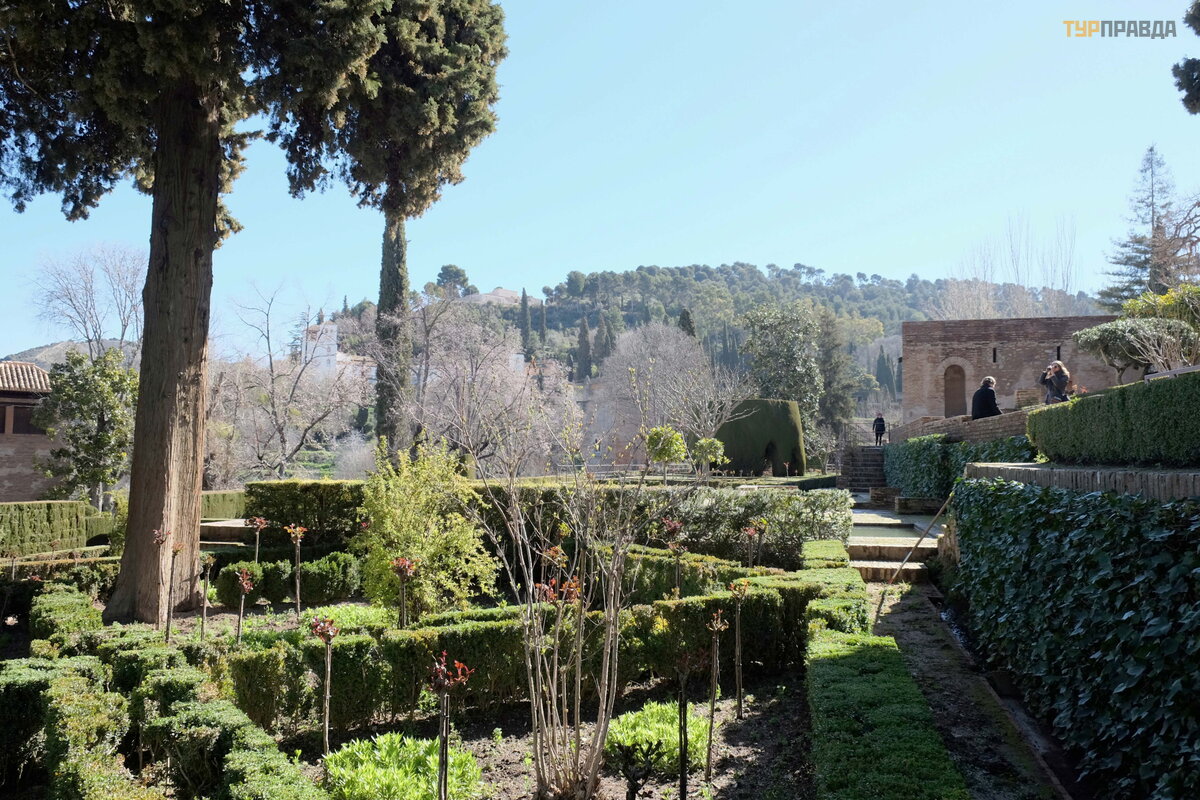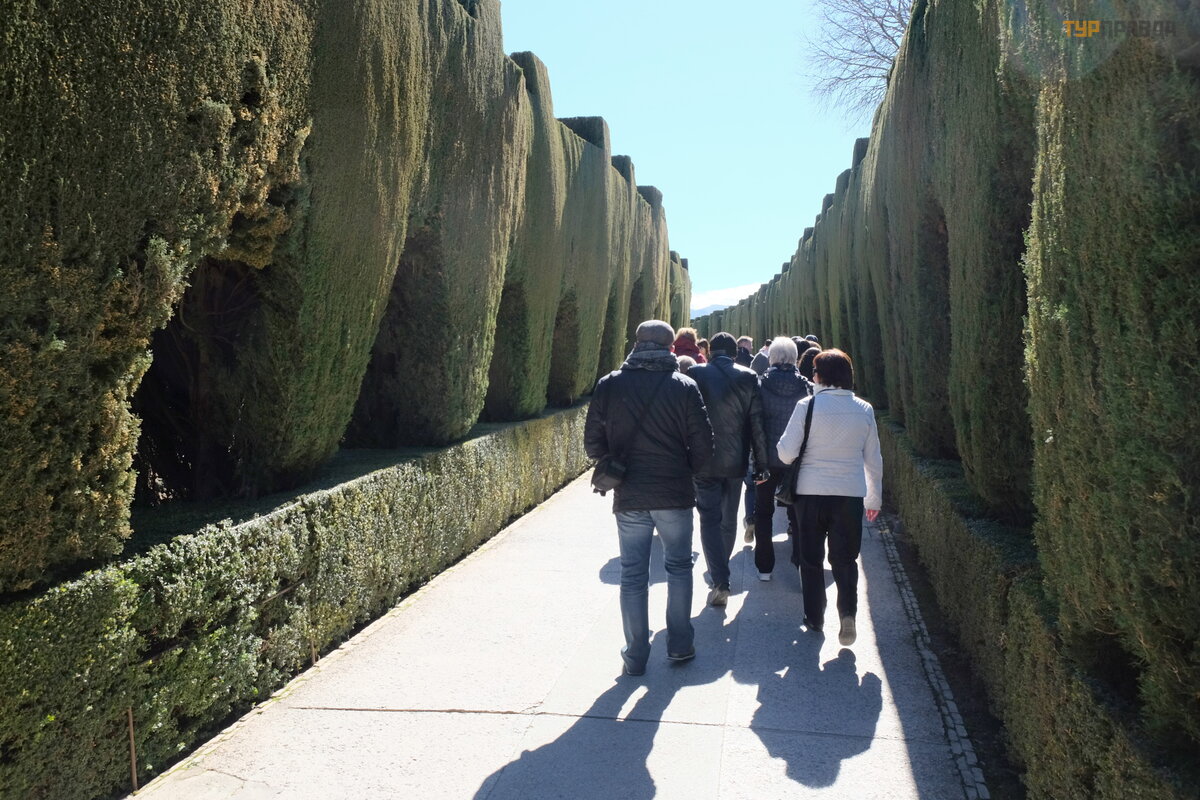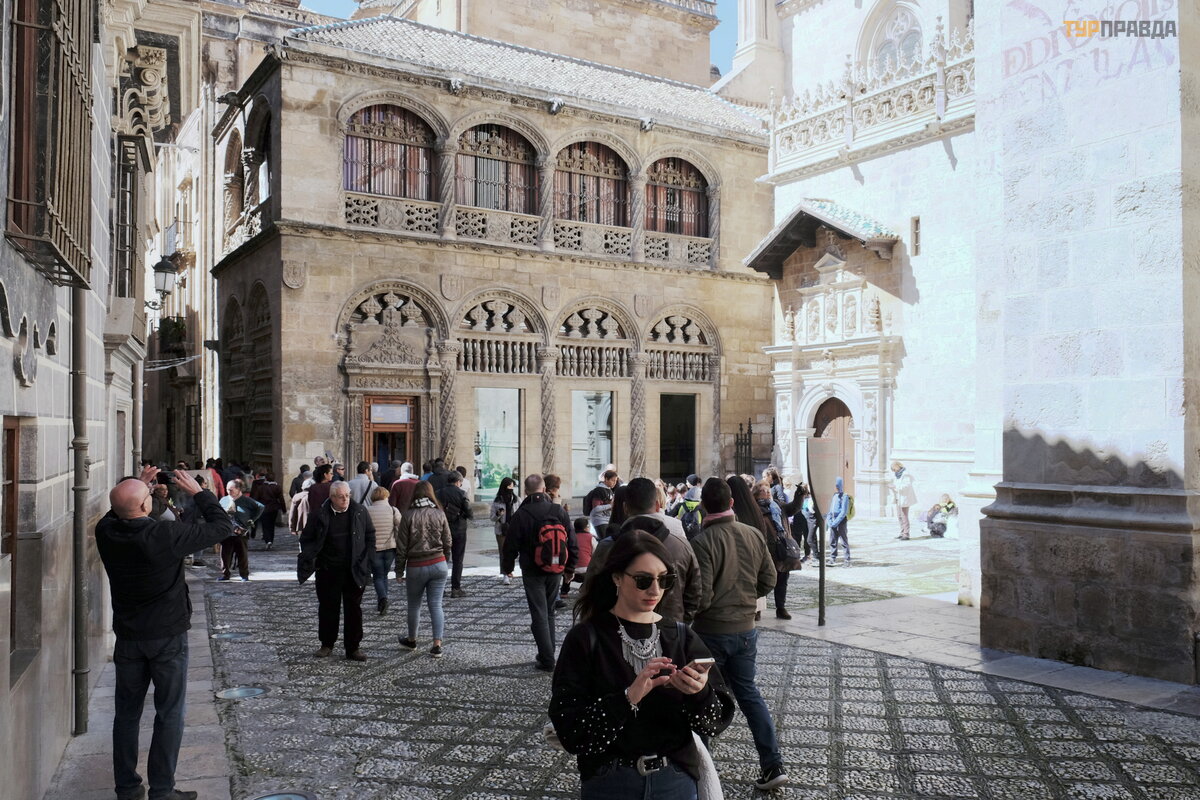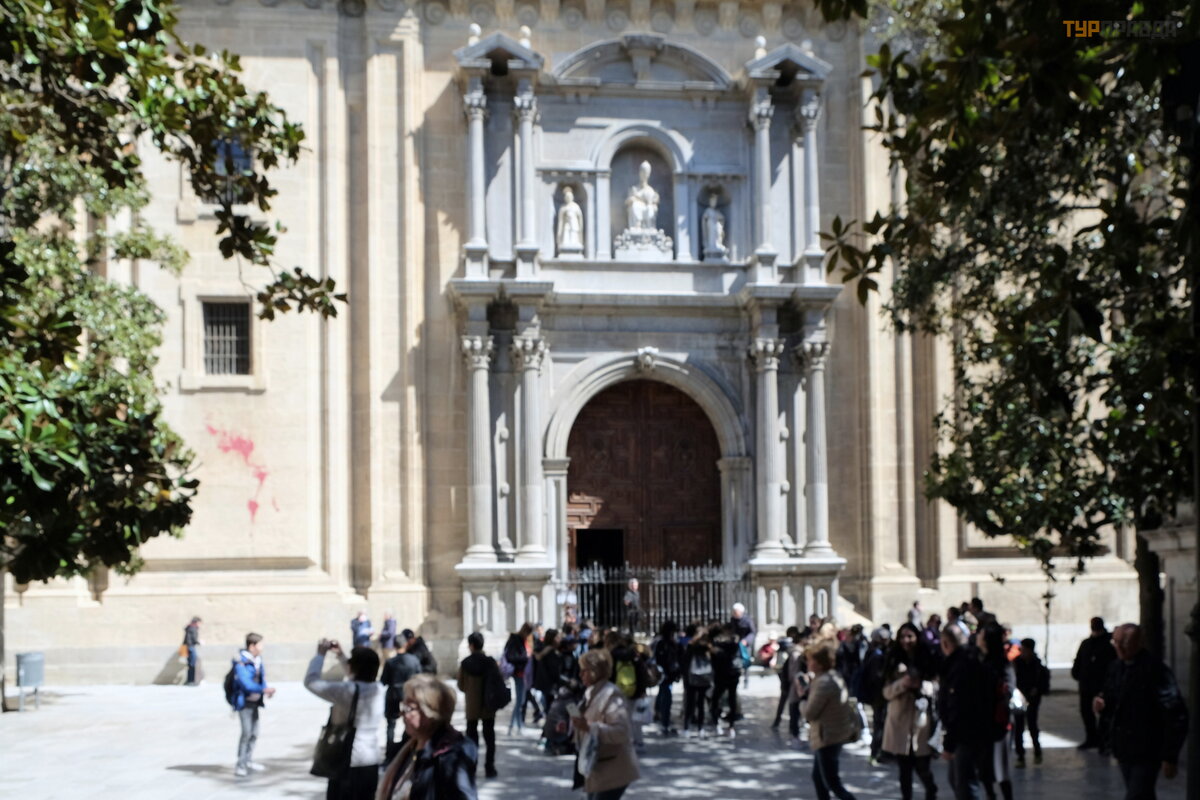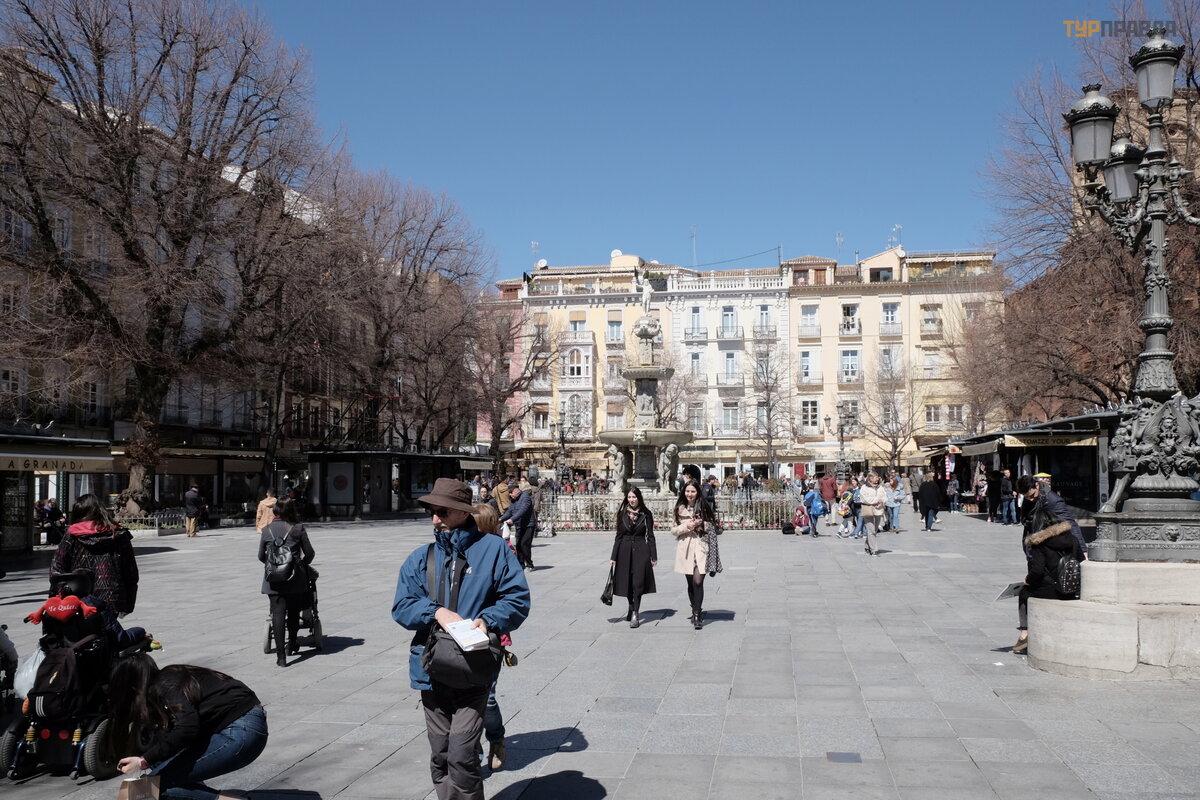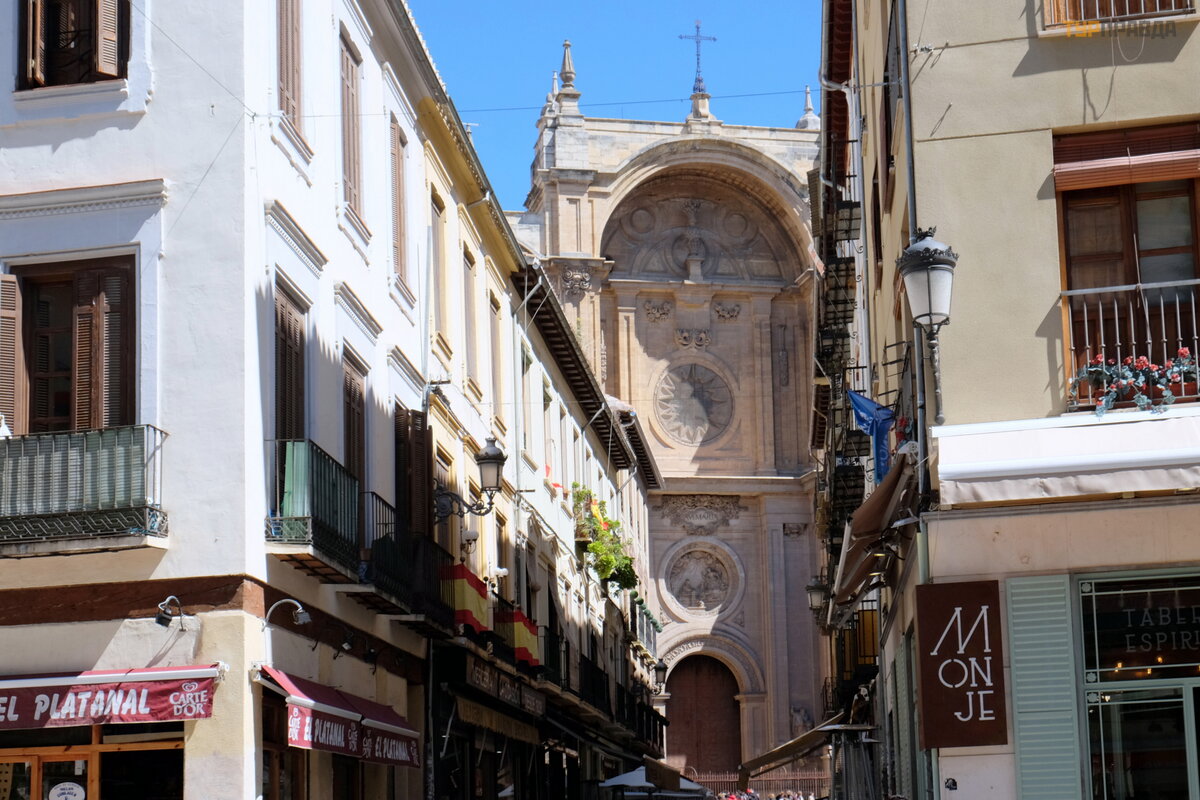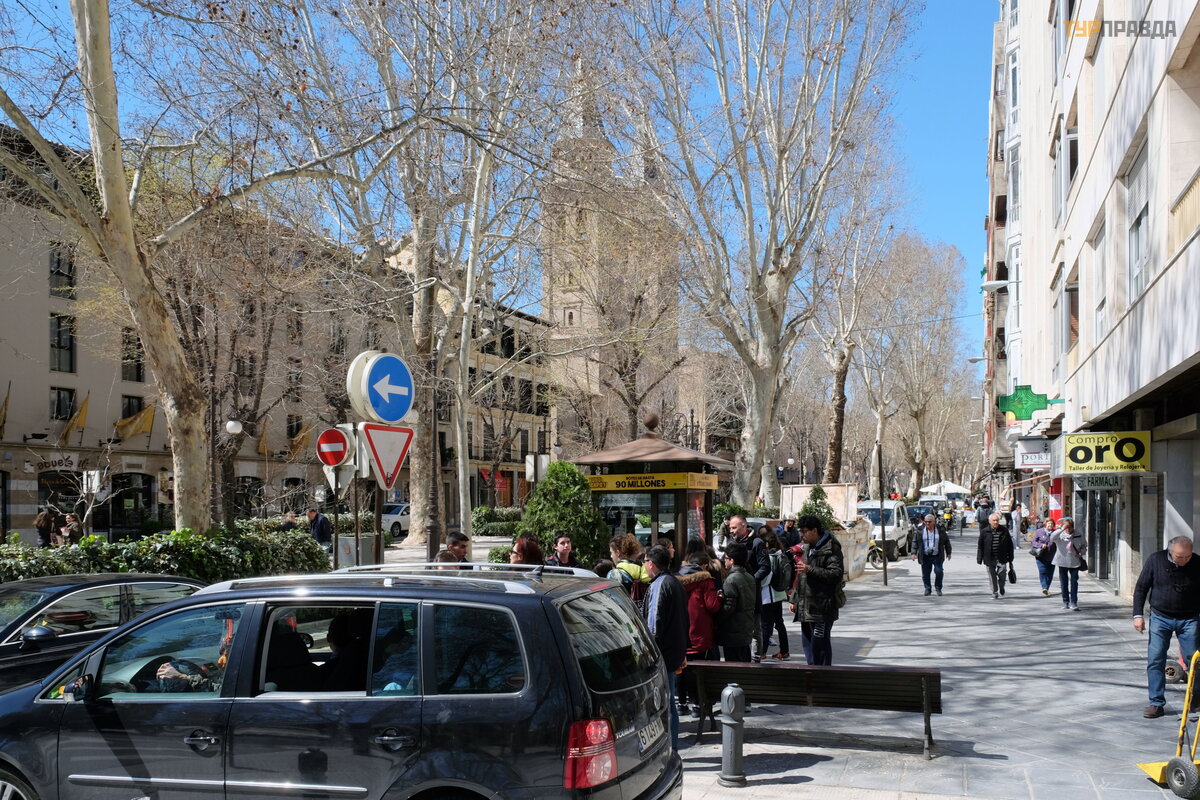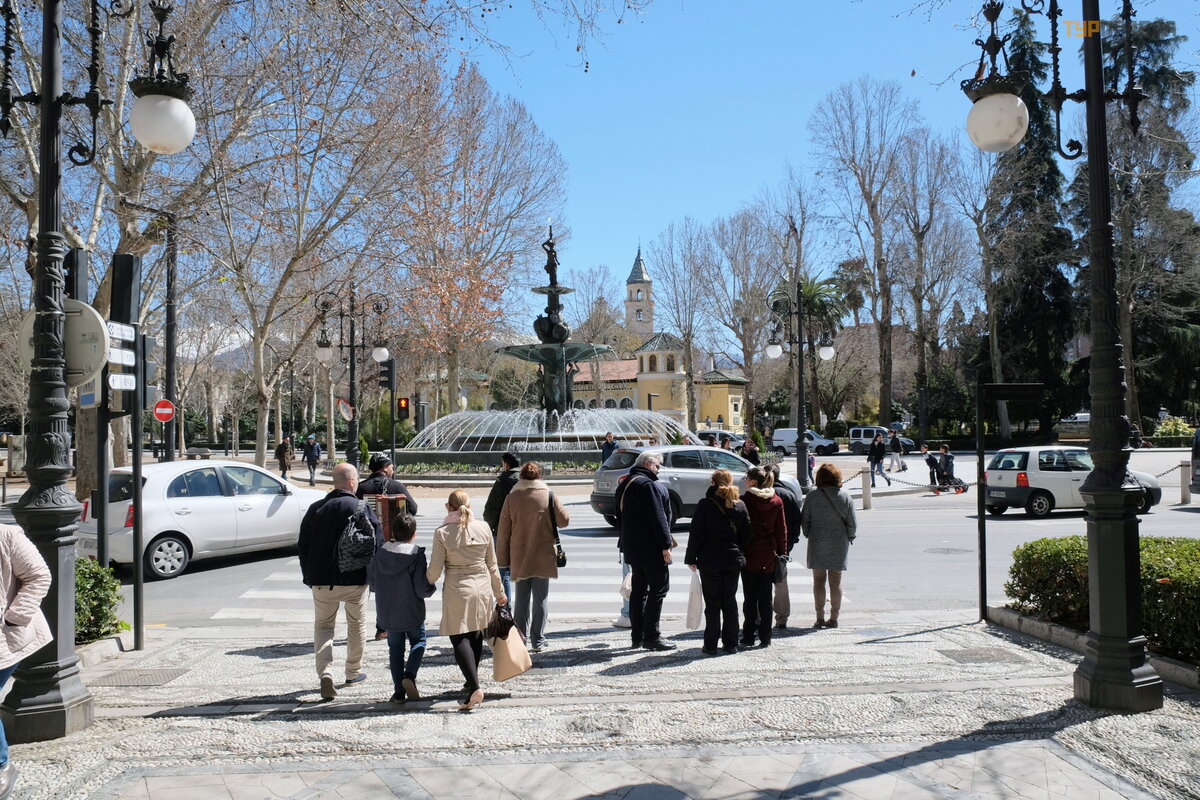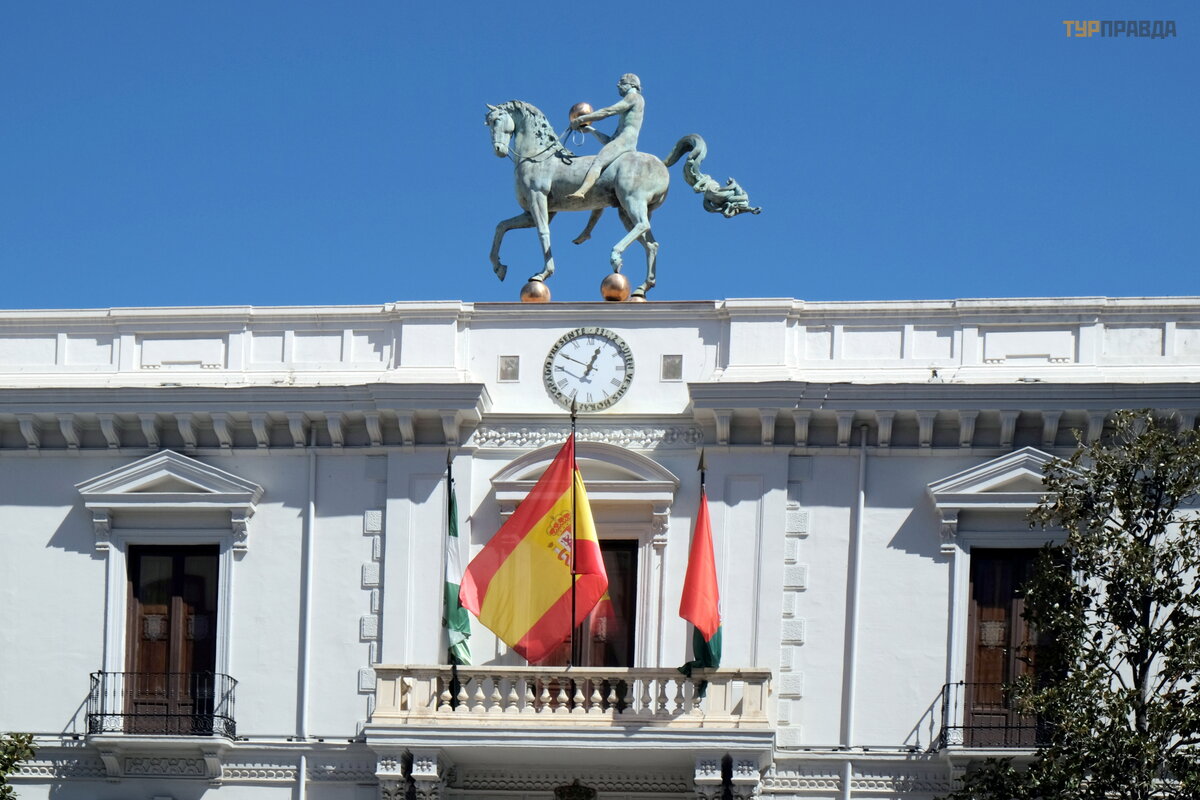And again Spain. Part 4

To be continued. Start here >>>
Day 6
Granada. In the morning visit the famous Alhambra. With tickets there, the most stressful in Spain, and besides, they are at certain visiting hours. Tickets were promised only to those from the group who bought the full version of the tour, our guide Kirill promised the rest to find options and did not disappoint. The tour with a ticket cost 30 euros.
I highly recommend that everyone take care of tickets in advance, because it's a shame to be in Granada and not get to the Alhambra. By the way, the group that went right after us to the Holy Week was not lucky, they had an excursion to the Alhambra replaced by a visit to the Alcazar in Seville. Yes, and Mesquita was closed, it's a shame.
It was quite cool in the morning, it must be taken into account that Granada is located at an altitude of 738 meters, and the Alhambra is also on a hill and a cold wind was blowing, although the sun was shining. Nearby, the Sierra Nevada mountains are visible with snow cover.
The Alhambra is a city within a city, a complex of palaces and gardens. Construction began under Mohamed 1 and continued for many years both under the rule of the Granada Caliphate and by Christians until the accession of Philip 5 in the 18th century.
Without tickets, you can visit the premises before entering the palace. The palace was protected by the Alcazaba (citadel) - a series of towers and walls. The tour was conducted by a local guide who spoke Russian well.
Next, we climbed the Upper Alhambra, where there was a residential building for service personnel, baths, bazaars, a mosque.
The Church of Santa Maria il Alhambra was built in 1581-1618. on the site of the Grand Mosque.
In the 16th century, Emperor Charles V decided to build a palace next to him,
which was rebuilt right up to the middle of the 20th century. The palace was built in the Mannerist style and contrasts sharply with the rest of the buildings of the Alhambra.
And this is the courtyard, you can immediately see the influence of Italian architects from whom Pedro Machuca studied in Rome, who designed the palace.
The most valuable buildings of the Alhambra are the palaces of the Nasrid dynasty, from here the ticket entrance begins.
The oldest part of the palace is Mechouar, a building for audiences and courts. Some of the buildings were rebuilt in Christian times, but the main hall has been preserved.
This is the courtyard of Meshuara, the passage to the Kamares Palace, the official residence of the Emir.
The passage to the palace is decorated with golden tiles
We enter the Comares Tower, the tallest building in the Alhambra (45 meters).
On the first floor of the tower, the most majestic room of the palace is the Hall of Ambassadors.
The inlaid wooden ceiling symbolizes the seven heavens of the Muslim paradise with the throne of Allah in the middle.
And this is the Golden Room, which was the reception room. It got its name from the gilded wooden ceiling
Inside the palace is the most beautiful place - the Myrtle Yard, so named for the myrtle hedge along the pond.
Next we get to the Palace of Lions - these are the emir's private chambers. Built in the 14th century under Mohammed V.
The central courtyard of the palace - the Lion Courtyard with the Fountain of Lions in the middle.
The courtyard is surrounded by arched galleries
Through the courtyard we get to the Hall of Stalactites, we got the name from the ceiling.
Let's move on to the Abenserrach Hall, in this hall, 37 of his relatives were executed for having a connection with the wife of the emir of one of the representatives of this family. The hall is famous for its star-shaped dome.
In the next Hall of Kings, the ceiling is just as good
We go to the female half of the palace - the Hall of the Two Sisters (the name came from two marble slabs on the floor, separated by a fountain),
where were the chambers of the sultana
From here you can get to the covered balcony of Mirador Daracha ("Eyes of the Sultana") from which she could see what was happening in the rooms of the women's half of the palace. Previously, there was a view of the river, but when the palace of Charles V was added, an inner Cypress Courtyard was formed
Let's move on to the Generalife gardens, which are located between the palace and the summer residence. The palace and gardens were built in the early 14th century.
This is Cypress Yard
In front of the Palace of the Generalife, a beautiful Brook Courtyard
Further on, you can go to the observation platforms with a beautiful panorama of Granada and its surroundings
The snowy peaks of the Sierra Nevada are clearly visible
Then we visited the Upper Gardens, laid out at the end of the 19th century, and the Lower Gardens, laid out in the period 1931-1951.
View of the observation deck
This is an outdoor theater
In total, we walked around the Alhambra for about three hours, the sun began to bake and we headed down to Granada
Granada was the capital of the Emirate of Granada and was the last stronghold of the Arabs during the Reconquista (liberation of Spain from the Arabs). With the capture of the city on January 2.1492, the Reconquista ended. The Arab vrysko, under the Treaty of Surrender, was transported by sea to North Africa. The peaceful Arab population began to be oppressed, taxes increased, they were forcibly converted to Christianity. In 1499, more than 10.000 priceless copies of Muslim manuscripts, Korans, were publicly burned in Granada. Only 300 copies survived to this day.
Three months later, in the Alhambra, the Catholic kings Isabella of Castile and her husband Ferdinand of Aragon signed a decree on the expulsion of all Jews from Spain within the same month.
The Jewish quarter of the city was largely destroyed. Those who did not want to leave were forced to accept Christianity (baptized Jews were called Marrans, Muslims were called Morrisks). Attempts to secretly preserve their traditional faith were brutally suppressed by the Inquisition, created in 1478. the same Isabella and Ferdinand and existed right up to 1834!
The year 1492 was rich in events, it was in this year that Columbus discovered the New World. Isabella gave money for the expedition, although her husband Ferdinand was categorically against it. Then Isabella invested personal money and jewelry in the expedition with the condition that everything that Columbus discovers and brings to Spain will be only her property, Ferdinand will not receive anything. and so it later turned out.
Here is a monument where Columbus asks permission for an expedition from Isabella.
. Moving on to the Cathedral
in the Royal Chapel of which Isabella and Ferdinand are buried. The cathedral was built for almost 200 years, construction began in 1518.
After a short review, we had an hour and a half of free time. We went to wander around the city and buy food.
This is Caldereria Street in the Muslim neighborhood of Albaciin.
The group's meeting point is on Carmen Square near City Hall, which is easy to find by looking at the equestrian statue on the roof. No one really explains what the golden balls symbolize.
That's where we left Granada and Andalusia and went to spend the night in Alicante.
Continued here >>>
